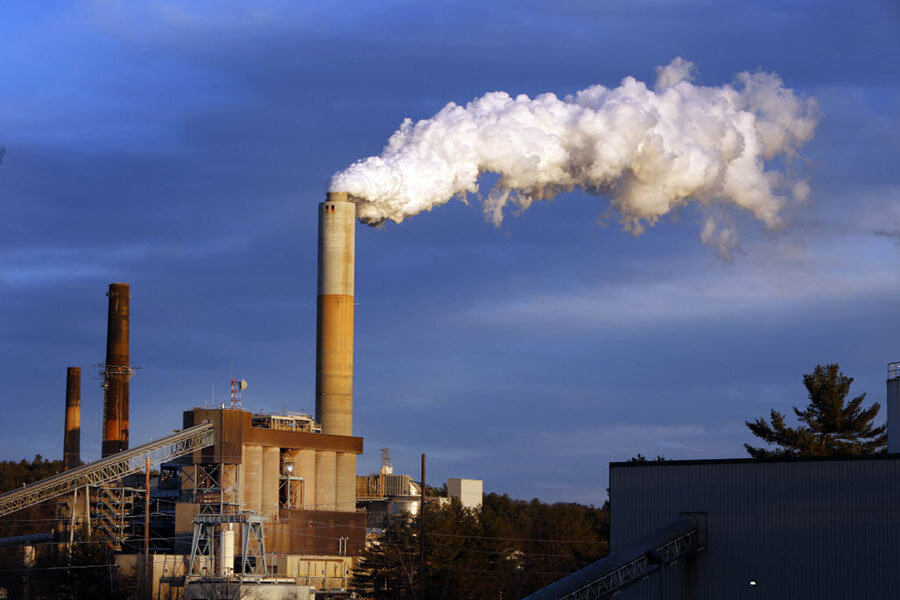Do Americans have enough zeal for Obama climate change plan?
Loading...
With its new regulations to cut carbon emissions, the Obama administration is proposing nothing less than a first step toward recasting the energy industry in the United States.
It is calling for America's power companies to generate 28 percent of the country's energy from renewable sources by 2030 (up from 11 percent today). Over the same time period, those same companies must cut carbon emissions to 32 percent of 2005 levels.
The new rules will cast America as a climate change leader ahead of a global climate change conference in Paris later this year.
They will also face tremendous headwinds: Legal challenges will attempt to gut the regulations, subsequent presidents could allow them to lapse, and energy companies will likely oppose them every step of the way.
But perhaps most important to the survival of the president's new vision of American energy is the support of the American people.
President Obama has now put the US on a path largely pioneered by a handful of Western European nations, such as Sweden and Germany. Particularly in Germany's case, those experiments have not all gone smoothly. Germany now has some of the highest energy prices in Europe.
But public support has remained strong, even as energy companies have pushed back on the changes. In short, the residents of those countries wanted to be green-energy leaders, so they have been.
Where Americans stand is an open question.
On the Pew Research Center's list of 23 items that are a top priority for the president and Congress, global warming was ranked 22nd by respondents. Just 38 percent said it was a top priority, compared with 76 percent who chose terrorism, for instance.
But the survey shows movement. The 38 percent figure is a 10 percentage point uptick from last year; the previous three years had remained largely steady. Mr. Obama will argue his side has the momentum, though one poll suggests Millennials are just as conflicted about climate change as older Americans.
“Climate change is not a problem for another generation, not anymore,” Obama said in a Facebook video posted Saturday.
The Obama administration claims that the rules will not increase energy prices. But they will almost certainly lead to upheaval in the energy industry, with potentially hundreds of coal-fired power plants being closed. Critics say price increases will be steep.
German Chancellor Angela Merkel doubled down on energy-industry upheaval when she decided to shutter all Germany's nuclear power reactors while at the same time setting aggressive new targets for green energy. Currently, 27 percent of German power is renewable. But the double whammy of ramping up renewable energy while shutting down nuclear power has contributed to huge price increases.
Yet, Germans largely remain undaunted.
A 2014 Time magazine poll caught the spirit of Germany's crusading zeal for its Energiewende – "energy revolution" – when it surveyed six countries, asking residents if their homeland was a part of the climate change solution. Only in Germany did a majority (60 percent) answer "yes."
That passion is perhaps even more apparent in another set of numbers. In 2012, private individuals and farmers accounted for 46 percent of renewable energy production in Germany; its "big four" power providers accounted for 5 percent. In other words, Germany's green power revolution is being fueled by folks with solar cells on the roof or windmills in the backyard, not the major power companies.
Indeed, one of Germany's major problems has been that power companies have dragged their feet, says a Bloomberg editorial. "Had they embraced the changes and absorbed the associated losses earlier, they would be in better shape today."
Those losses involve changing the way power companies do business, not only producing more green energy, but also embracing the idea that more consumers will be generating their own power, and learning cope with natural fluctuations in renewable energy. For example, last month, on a day that was particularly blustery in the north and sunny in the south, Germany got a record 78 percent of its energy from renewable sources.
At this point, American power companies and the politicians who support them are gearing up for a fight. Senate majority leader Mitch McConnell (R) from the coal-producing state of Kentucky has already called on states to defy the new rules. Some 26 attorneys general are lining up lawsuits.
The new Obama plan, which is merely the final draft of rules proposed by the Environmental Protection Agency in 2012 and 2014, is based on giving states flexibility. Each is allowed to come up with its own plan under the guidelines laid out by the EPA. If states refuse to create their own plans, the Obama administration will impose a plan, The New York Times reports.
Most likely, states will adopt a cap for carbon emissions and then establish a system of trading credits to polluters. Republicans call this "cap and tax."
For its part, Sweden has taxed carbon emissions aggressively since 1991 – so long ago that "many people do not notice" it anymore, according to a report by CleanTechnica. Some 47 percent of Sweden's energy comes from renewable sources, mostly hydropower; virtually none comes from coal.
Sweden, Obama said in 2013, "offers us some good lessons."






